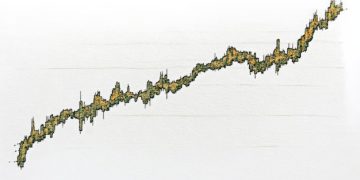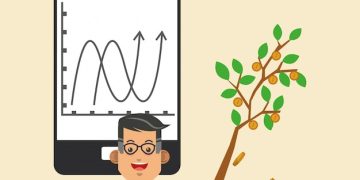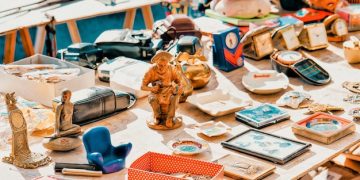Investing in Art: A Unique Asset Class for Discerning Investors
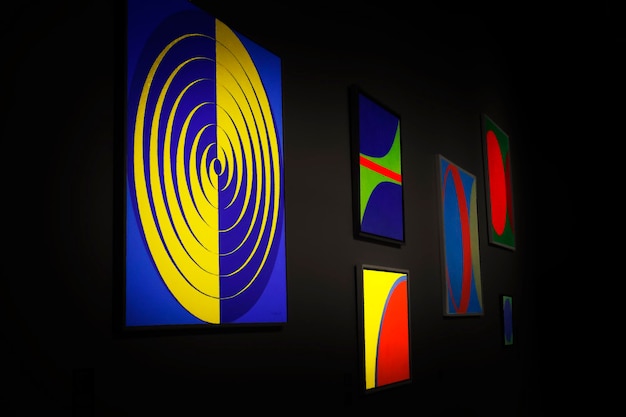
Investing in art presents a distinctive avenue for discerning investors seeking diversification and potential appreciation, with careful consideration of market trends, provenance, and artistic merit crucial for success.
The world of finance is constantly evolving, and investors are always on the lookout for unique and potentially lucrative opportunities. One such avenue is investing in art, a practice that has captivated discerning collectors and investors for centuries. Unlike traditional assets like stocks and bonds, art offers both tangible beauty and the potential for significant appreciation over time.
Understanding Art as an Investment
Investing in art differs substantially from investing in other asset classes. It’s crucial to understand the nuances of the art market before diving in. This involves assessing not only financial aspects but also aesthetic and cultural values.
The Allure of Art Investment
Art has inherent aesthetic value, but its value as an investment comes from various factors, including the artist’s reputation, the artwork’s historical significance, and market demand. Successful art investments often require a deep understanding of art history, current trends, and emerging artists.
Key Considerations Before Investing
Before adding art to your portfolio, consider factors such as your investment goals, risk tolerance, and the amount of capital you’re willing to allocate. Due diligence is vital to ensure you are making informed decisions based on reliable information.
- Authenticity: Verify the artwork’s authenticity through reputable sources and experts.
- Provenance: Understand the artwork’s history, including its ownership and previous exhibitions.
- Market Trends: Keep abreast of current market trends and auction results.
In conclusion, understanding art as an investment involves a blend of financial acumen and cultural appreciation. It is essential to approach the art market with a clear strategy and a willingness to learn.
Navigating the Art Market
The art market can seem opaque and intimidating to newcomers. Understanding its structure and dynamics is essential for making sound investment decisions. This section covers some key aspects of navigating this complex landscape.
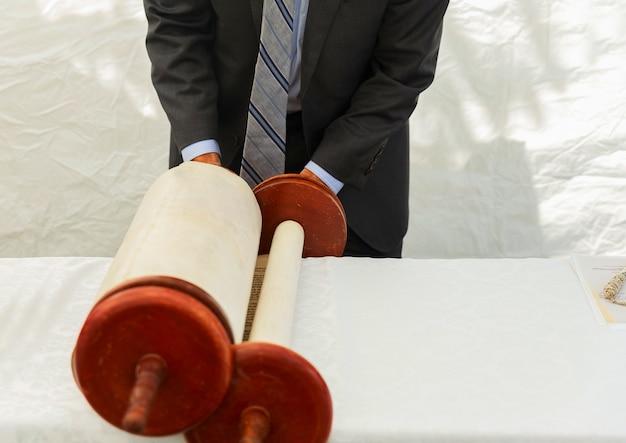
Primary vs. Secondary Market
The primary market involves purchasing art directly from artists or their galleries, while the secondary market includes resales at auctions or through dealers. Each market has its own advantages and risks.
Role of Art Advisors and Consultants
Art advisors can provide valuable guidance in navigating the art market. They can assist with identifying investment opportunities, conducting due diligence, and managing art collections.
- Expertise: Benefit from the knowledge and experience of seasoned art professionals.
- Network: Gain access to a broader network of artists, dealers, and collectors.
- Objectivity: Receive unbiased advice on art acquisitions and sales.
In summary, navigating the art market requires a strategic approach. Seeking expert advice and understanding both primary and secondary markets can significantly enhance your investment outcomes.
Assessing the Value of Artworks
Determining the value of an artwork is a multifaceted process that goes beyond simple aesthetics. It involves considering various factors such as the artist’s reputation, the artwork’s condition, and its provenance.
Artistic Merit and Historical Significance
The artistic merit of an artwork is subjective but crucial. Art historians, critics, and curators often assess the historical significance and innovation that an artwork brings to the art world.
Condition and Rarity
The condition of an artwork significantly impacts its value. Preservation and restoration play a key role. Rarity also drives up value, making unique or limited-edition pieces highly desirable.
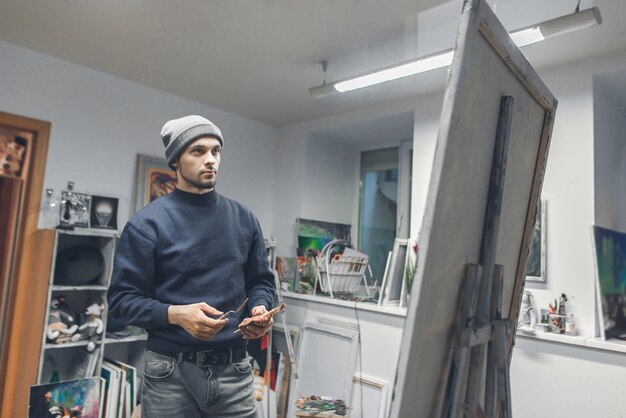
In conclusion, assessing the value of artworks requires a comprehensive approach, considering both tangible and intangible factors. Understanding the interplay between artistic merit, historical significance, condition, and rarity is essential for making informed investment decisions.
The Risks and Rewards of Investing in Art
Like any investment, investing in art comes with its own set of risks and rewards. Understanding these potential gains and pitfalls is crucial for responsible investment.
Potential for Appreciation
Art can appreciate significantly in value, especially if the artist gains recognition or the artwork becomes historically significant. However, there is no guarantee of appreciation.
Illiquidity and Market Volatility
Art is an illiquid asset, meaning it can be challenging to sell quickly. The art market can also be volatile, with prices fluctuating based on economic conditions and shifts in taste.
Diversification Benefits
Art can offer diversification benefits to an investment portfolio, as its performance is often uncorrelated with traditional assets like stocks and bonds. This can help reduce overall portfolio risk.
Ultimately, the risks and rewards of investing in art must be carefully weighed. Understanding market dynamics, managing risk, and having a long-term investment horizon are key to potential success.
Building an Art Portfolio
Constructing a diverse and well-rounded art portfolio demands a thoughtful strategy. It’s not just about acquiring pieces that appeal to you aesthetically; it’s about building a collection that has the potential to grow in value over time.
Diversification Across Artists and Mediums
Diversifying your art portfolio means investing in a range of artists, styles, and mediums. This can help mitigate risk and increase the likelihood of capturing different market trends.
Setting a Budget and Investment Timeline
Establishing a clear budget and investment timeline is crucial. Determine how much capital you want to allocate to art and how long you plan to hold your investments.
Storage and Insurance Considerations
Proper storage and insurance are essential for protecting your art investments. Consider climate-controlled storage facilities and comprehensive insurance coverage.
In conclusion, building an art portfolio requires a strategic approach, focusing on diversification, budget management, and risk mitigation. Proper storage and insurance are critical for long-term preservation.
The Future of Art Investment
The art market is continuously evolving, influenced by technological advancements and changing investor preferences. Understanding these future trends can provide valuable insights for investors.
Impact of Technology and Online Platforms
Online platforms and digital technologies are democratizing access to the art market. Online auctions, virtual galleries, and blockchain technology are transforming the way art is bought and sold.
Emerging Markets and Artists
Emerging markets and artists offer new investment opportunities. Keeping an eye on these trends can lead to uncovering undervalued artworks with high growth potential.
Sustainability and Ethical Considerations
Sustainability and ethical considerations are becoming increasingly important in the art world. Investors are paying attention to the provenance and ethical sourcing of artworks.
In summary, the future of art investment is shaped by technology, emerging markets, and ethical considerations. Keeping abreast of these trends can help investors navigate the changing landscape and capitalize on new opportunities.
| Key Point | Brief Description |
|---|---|
| 🎨 Understanding Art Value | Assessing art requires knowing market trends and the artist’s reputation. |
| 🏛️ Navigating the Market | Learn primary vs. secondary markets and the role of art advisors. |
| 💰 Risks & Rewards | Balance potential appreciation with illiquidity and volatility. |
| 📊 Portfolio Building | Diversify across styles and mediums, set clear budget and timeline. |
Frequently Asked Questions
What makes art a unique asset class?
Art’s uniqueness stems from its blend of aesthetic, cultural, and historical value. Unlike stocks, art offers tangible appreciation and portfolio diversification.
How can I verify the authenticity of an artwork?
Verify authenticity by consulting art experts, checking provenance records, and using reputable authentication services. These steps help ensure you’re investing in genuine pieces.
What are the key risks involved in art investment?
Key risks include market illiquidity, fluctuating values, and the potential for damage or loss. Proper insurance and storage can mitigate some risks.
How do I build a diversified art portfolio?
Build a diversified portfolio by investing in various artists, styles, and mediums. Balance established artists with emerging talents to manage risks and capture opportunities.


